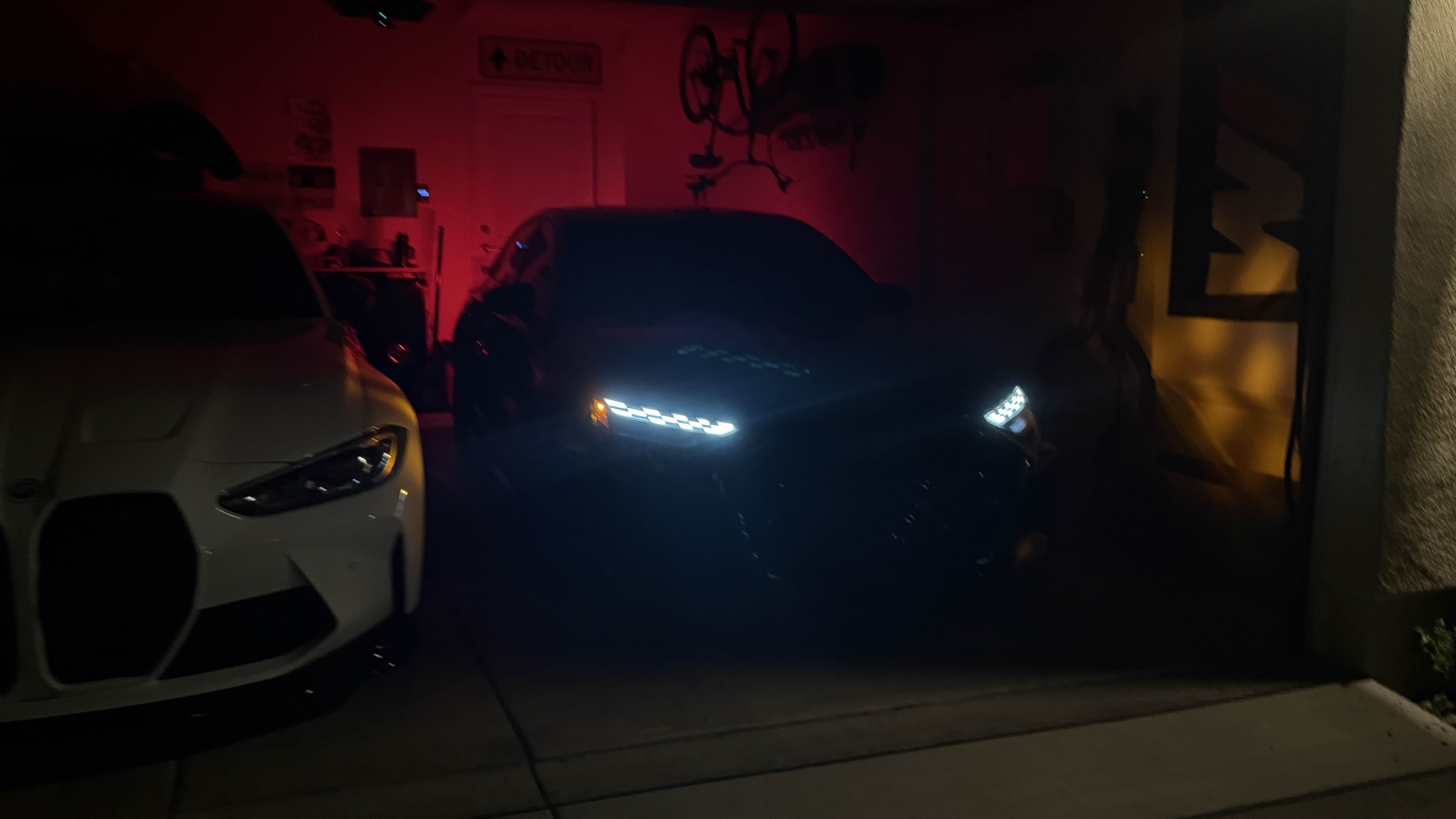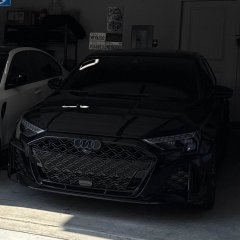
Everything posted by David
-
GTA 6 Modded Servers
How do you think it's gonna work with GTA 6? What do you think about Mountain Interactive aiming for achieving modded servers when the game fully comes out?
-
ban appeal
I have a question. Why did you RDM 5 people? What made you want to do it, what was the point? You had a previous ban, so I'm just trying to figure out your thinking. Let me know thanks!
-
My Birthday
- Staff Report
I'd like to know more information about this, make a ticket @ https://support.mountaininteractive.com/portal/en/newticket?departmentId=1095613000000425096&layoutId=1095613000000431745- Staff Report
Hello, You were abusing your administrative permissions, you were warned. You were then terminated. It's not fair that other players get banned for the actions that you took in the game. The best thing you can do is take responsibility for what you did wrong. Justifying your actions by pinning your own behavior on cole and fraud do not assist your case. STAFF REPORT DENIED- Update to LASD insert fleet
- how do i cancel my subscription theres no cancel button
Yes you can. You can also monitor purchases through https://billing.mountaininteractive.com- LA radio
- Suspended License?!
- Suspended License?!
good question, It's temporary so it'll go away.- Question for Staff
- How to use PA in game?
- Subscription Problem
- Subscription Problem
https://support.mountaininteractive.com/portal/en/newticket https://support.mountaininteractive.com/portal/en/newticket https://support.mountaininteractive.com/portal/en/newticket https://support.mountaininteractive.com/portal/en/newticket https://support.mountaininteractive.com/portal/en/newticket https://support.mountaininteractive.com/portal/en/newticket https://support.mountaininteractive.com/portal/en/newticket https://support.mountaininteractive.com/portal/en/newticket https://support.mountaininteractive.com/portal/en/newticket https://support.mountaininteractive.com/portal/en/newticket https://support.mountaininteractive.com/portal/en/newticket https://support.mountaininteractive.com/portal/en/newticket https://support.mountaininteractive.com/portal/en/newticket https://support.mountaininteractive.com/portal/en/newticket https://support.mountaininteractive.com/portal/en/newticket https://support.mountaininteractive.com/portal/en/newticket https://support.mountaininteractive.com/portal/en/newticket https://support.mountaininteractive.com/portal/en/newticket https://support.mountaininteractive.com/portal/en/newticket https://support.mountaininteractive.com/portal/en/newticket https://support.mountaininteractive.com/portal/en/newticket https://support.mountaininteractive.com/portal/en/newticket https://support.mountaininteractive.com/portal/en/newticket https://support.mountaininteractive.com/portal/en/newticket https://support.mountaininteractive.com/portal/en/newticket https://support.mountaininteractive.com/portal/en/newticket https://support.mountaininteractive.com/portal/en/newticket https://support.mountaininteractive.com/portal/en/newticket https://support.mountaininteractive.com/portal/en/newticket https://support.mountaininteractive.com/portal/en/newticket https://support.mountaininteractive.com/portal/en/newticket https://support.mountaininteractive.com/portal/en/newticket https://support.mountaininteractive.com/portal/en/newticket https://support.mountaininteractive.com/portal/en/newticket https://support.mountaininteractive.com/portal/en/newticket https://support.mountaininteractive.com/portal/en/newticket https://support.mountaininteractive.com/portal/en/newticket https://support.mountaininteractive.com/portal/en/newticket https://support.mountaininteractive.com/portal/en/newticket https://support.mountaininteractive.com/portal/en/newticket https://support.mountaininteractive.com/portal/en/newticket https://support.mountaininteractive.com/portal/en/newticket https://support.mountaininteractive.com/portal/en/newticket https://support.mountaininteractive.com/portal/en/newticket https://support.mountaininteractive.com/portal/en/newticket https://support.mountaininteractive.com/portal/en/newticket https://support.mountaininteractive.com/portal/en/newticket https://support.mountaininteractive.com/portal/en/newticket https://support.mountaininteractive.com/portal/en/newticket https://support.mountaininteractive.com/portal/en/newticket https://support.mountaininteractive.com/portal/en/newticket https://support.mountaininteractive.com/portal/en/newticket https://support.mountaininteractive.com/portal/en/newticket https://support.mountaininteractive.com/portal/en/newticket https://support.mountaininteractive.com/portal/en/newticket https://support.mountaininteractive.com/portal/en/newticket https://support.mountaininteractive.com/portal/en/newticket https://support.mountaininteractive.com/portal/en/newticket https://support.mountaininteractive.com/portal/en/newticket https://support.mountaininteractive.com/portal/en/newticket https://support.mountaininteractive.com/portal/en/newticket https://support.mountaininteractive.com/portal/en/newticket https://support.mountaininteractive.com/portal/en/newticket https://support.mountaininteractive.com/portal/en/newticket https://support.mountaininteractive.com/portal/en/newticket https://support.mountaininteractive.com/portal/en/newticket https://support.mountaininteractive.com/portal/en/newticket https://support.mountaininteractive.com/portal/en/newticket https://support.mountaininteractive.com/portal/en/newticket https://support.mountaininteractive.com/portal/en/newticket https://support.mountaininteractive.com/portal/en/newticket https://support.mountaininteractive.com/portal/en/newticket https://support.mountaininteractive.com/portal/en/newticket https://support.mountaininteractive.com/portal/en/newticket https://support.mountaininteractive.com/portal/en/newticket https://support.mountaininteractive.com/portal/en/newticket https://support.mountaininteractive.com/portal/en/newticket https://support.mountaininteractive.com/portal/en/newticket https://support.mountaininteractive.com/portal/en/newticket https://support.mountaininteractive.com/portal/en/newticket https://support.mountaininteractive.com/portal/en/newticket https://support.mountaininteractive.com/portal/en/newticket https://support.mountaininteractive.com/portal/en/newticket https://support.mountaininteractive.com/portal/en/newticket https://support.mountaininteractive.com/portal/en/newticket https://support.mountaininteractive.com/portal/en/newticket https://support.mountaininteractive.com/portal/en/newticket https://support.mountaininteractive.com/portal/en/newticket https://support.mountaininteractive.com/portal/en/newticket https://support.mountaininteractive.com/portal/en/newticket https://support.mountaininteractive.com/portal/en/newticket https://support.mountaininteractive.com/portal/en/newticket https://support.mountaininteractive.com/portal/en/newticket https://support.mountaininteractive.com/portal/en/newticket https://support.mountaininteractive.com/portal/en/newticket https://support.mountaininteractive.com/portal/en/newticket https://support.mountaininteractive.com/portal/en/newticket https://support.mountaininteractive.com/portal/en/newticket https://support.mountaininteractive.com/portal/en/newticket https://support.mountaininteractive.com/portal/en/newticket https://support.mountaininteractive.com/portal/en/newticket- Bought the upgrade to titanium, renews in 3 days
- Unbans
- Membership Cancel
- Police academy
- Police academy
- Heli?
- Where do you see your Ingame Hours?
- This question is for staff
bozo got banned- How do you rank up to Metro in RPD?
^ his answer is correct- M.T Parris, California I.C.E
- M.T Parris, California I.C.E
yes go here > https://mountaininteractive.com/donate/ - Staff Report
(2)_bc5e1c.png)
